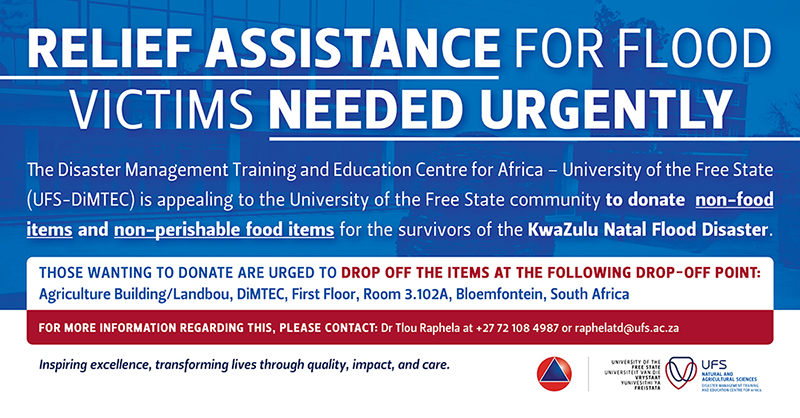South Africa recently witnessed a catastrophic natural disaster that resulted in the loss of life, livelihoods, and infrastructural damage. This occurred in KwaZulu-Natal where hundreds of people lost their lives as a result of extensive flooding and mudslides. President Cyril Ramaphosa declared a national state of disaster to which we should all respond. Specific reference was made to the public and private sectors, as well as civil society.
While I applaud the various stakeholders that have extended a helping hand, my heart bleeds for the vulnerable groups whose voices remain unheard, even under normal circumstances. One cannot help but wonder if aid will reach the isolated regions that suffered the adverse effects of these heavy rains, or if all developmental efforts will be prioritised to certain economic hubs of the province such as the eThekwini Metro and the capital, uMgungundlovu.
KwaZulu-Natal is among the poorest provinces in the country. Corroborating this claim is a report that was released by Statistics South Africa earlier this year which reveals that about 52% of the province’s population are considered to be ‘poor’,and live at the lower end of the poverty line.
Drawing from my experiences of the rural communities of KwaZulu-Natal with whom I have worked, many suffer from the triple challenge of poverty, inequality, and unemployment, and rely on agriculture for their livelihood and to put food on the table. Their supplementary income is obtained from government support grants. The graphic scenes that have been shown on the media illustrate the devastating effects of the heavy rains in regions within the agricultural sector. Fields have been washed away, crops and livestock have been lost. This is happening when the province is still trying to resuscitate its economy after the widespread looting that took place in July last year, which had a calamitous effect on businesses and livelihoods.
While this is an injury mainly for the people of KwaZulu-Natal, it is my wish that we all join hands in contributing towards the restoration of livelihoods. In agreement with the president’s assertion, we can all play a part in rebuilding the province. This includes institutions of higher learning, particularly the Community Engagement Directorates whose mandate is to drive socioeconomic development to external communities.
Related article: Opinion: KZN floods expose significant socio-economic and environmental vulnerabilities
